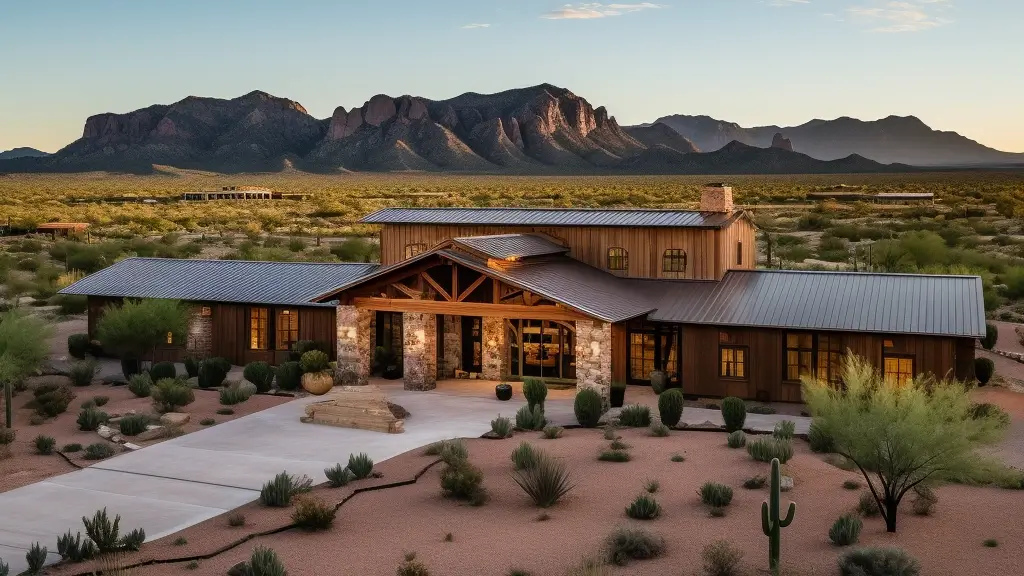Lasting Staying In a Barndominium: EcoFriendly Includes to Take Into Consideration When Structure
As the fad of barndominium living gains grip, the assimilation of lasting methods is ending up being progressively crucial for eco conscious home builders. By choosing energy-efficient products, exploring renewable power choices, and implementing innovative water preservation systems, one can dramatically boost the environmental impact of these functional frameworks. Furthermore, thoughtful landscaping selections can additionally add to a sustainable way of living. The subtleties of choosing the right functions and their long-term advantages might not be promptly apparent, triggering a closer assessment of how these aspects can change a barndominium into a design of eco-friendly living.
Energy-Efficient Building Materials
When building a barndominium, choosing energy-efficient structure products is crucial for promoting sustainability and decreasing general power consumption. The option of materials directly affects the structure's thermal efficiency, longevity, and ecological impact. Lasting alternatives such as redeemed timber, bamboo, and recycled steel not just decrease source deficiency yet additionally lower waste in land fills.
In addition, concrete, when sourced sensibly, can be an effective energy-efficient material. It provides excellent thermal mass, helping to manage interior temperature levels and reduce reliance on heating and cooling down systems. High-performance windows with low-E coverings and shielded structures can substantially enhance power effectiveness by reducing heat transfer.
An additional consideration is the installation of energy-efficient roof materials, such as steel, which shows solar power, therefore minimizing cooling prices. Integrating these products not only sustains a greener way of life yet can likewise lead to lasting monetary cost savings through lowered energy costs.

Sustainable Insulation Options

Cellulose insulation is derived from recycled paper items, providing an environmentally friendly alternative with exceptional thermal performance. Its capability to resist dampness and decrease air leak makes it particularly efficient in maintaining constant interior temperatures (learn more). Lamb's wool insulation is one more all-natural option, giving remarkable breathability and dampness administration while being eco-friendly
For those considering spray foam, choosing items with reduced international warming potential and high eco-friendly content can even more boost sustainability. Barndominium repair. Additionally, reflective insulation panels made from recycled products can be incorporated to boost energy effectiveness by lowering warmth loss
Ultimately, purchasing lasting insulation not just reduces energy usage yet additionally promotes a comfortable living space, lining up with the concepts of green living. Careful consideration of insulation materials will contribute to the long-lasting sustainability and effectiveness of a barndominium.
Water Conservation Solution
Carrying out reliable water preservation systems is essential for taking full advantage of sustainability in a barndominium. One of the most impactful techniques is the setup of rainwater harvesting systems. By collecting and storing rainwater from the roof covering, homeowners can considerably lower their dependence on community water supplies while offering a lasting resource for watering and non-potable usages.
In addition, incorporating greywater recycling systems can additionally enhance water conservation initiatives - learn more. These systems enable the reuse of wastewater from sinks, showers, and washing, channeling it back right into the watering system or bathrooms. This practice not just saves water however also reduces the worry on septic tanks
Low-flow fixtures and devices, such as taps, showerheads, and toilets, are additionally essential elements in water conservation. These components can decrease overall water use without sacrificing efficiency, making them an efficient choice for eco-conscious building contractors.
Finally, landscape design with drought-resistant plants can decrease water needs for try this outdoor spaces. Native and adapted plant types commonly call for much less water and upkeep, adding to a sustainable living environment. By implementing these water conservation systems, barndominium owners can create a more environmentally friendly and resource-efficient home.
Renewable Resource Sources
Taking advantage of renewable resource sources is a critical element of sustainable living in a barndominium. Incorporating solar panels is one of one of the most reliable means to produce clean energy. These panels transform sunshine right into electrical energy, substantially minimizing reliance on nonrenewable fuel sources and lowering power expenses. When strategically placed, photovoltaic panels can record maximum sunlight throughout the day, boosting effectiveness.
Another viable alternative is wind energy. Installing a tiny wind turbine can provide an extra source of renewable resource, specifically in areas with constant wind patterns. Wind turbines transform kinetic power from the wind into electricity, matching solar power by creating power throughout gloomy days or in the evening.
Geothermal heating and cooling down systems can also add to power efficiency. By making use of the stable temperatures underground, these systems can significantly decrease the power needed for cooling and heating, making them ideal for barndominiums in different environments.
Incorporating these sustainable power sources not only promotes a lasting lifestyle however additionally increases the general worth of the residential or commercial property. By spending in such technologies, property owners can accomplish power freedom, reduce their carbon footprint, and add to an extra lasting future.
Eco-Friendly Landscape Design Ideas
Creating a green landscape enhances both the aesthetic appeal and sustainability of a barndominium. By integrating native plants, house owners can promote biodiversity while decreasing water use and upkeep. Indigenous varieties are well-adapted to the neighborhood environment, calling for much less watering and plant food.
Furthermore, take into consideration applying permaculture concepts, which concentrate on creating landscapes that function harmoniously with nature. This can include planting edible gardens, fruit trees, and pollinator-friendly blossoms to develop a self-sufficient ecological community. Rainfall gardens, developed to catch and absorb stormwater, are another effective means to take care of overflow and boost dirt wellness.
Making use of natural mulches and garden compost not just enhances the soil yet likewise decreases the need for chemical plant foods. Integrating permeable paving products for pathways and driveways can help prevent water drainage, promoting groundwater recharge.
Conclusion
